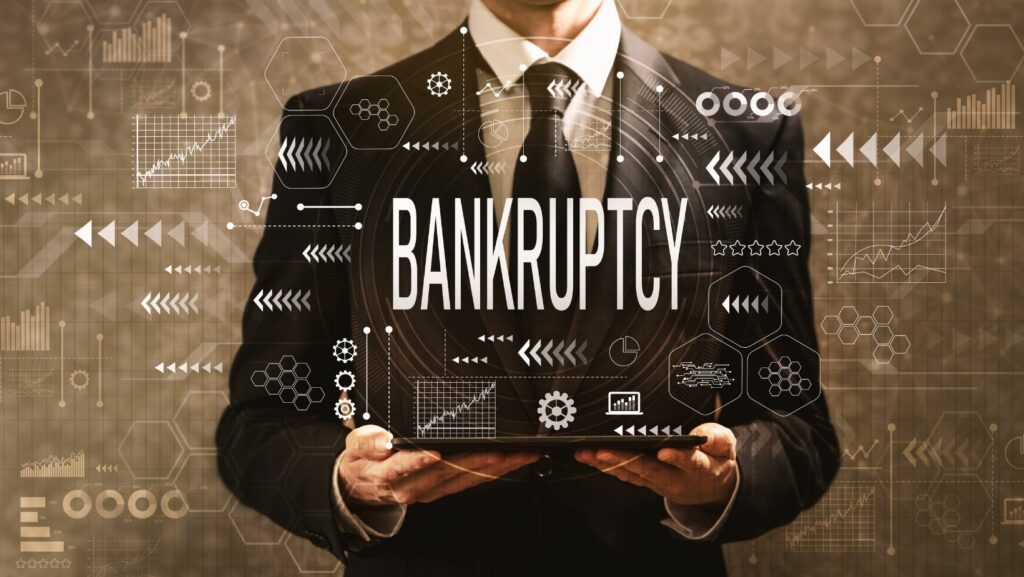
The Role Of Bankruptcy In Financial Recovery
Have you ever found yourself drowning in a sea of debt, with creditors hounding you day and night? Maybe you lost your job, faced unexpected medical bills, or made some poor financial decisions. Whatever the reason, increasing debt can quickly become overwhelming. But what if there’s a lifeline available?
Filing for business or personal bankruptcy is a legal process that can help businesses and individuals regain control of their finances. When you file for bankruptcy, you hit the reset button on your debt, putting an end to harassing creditor calls and wage garnishments. It’s a chance to catch your breath, reorganize your finances, and chart a new course toward financial recovery.
That said, here’s how bankruptcy can play a crucial role in your financial recovery:
Understanding Bankruptcy
Bankruptcy can help you improve your financial situation becomes unmanageable. It’s a legal lifeline, allowing individuals or struggling businesses to restructure obligations through different paths like:
Chapter 13 Bankruptcy
Chapter 13 bankruptcy, also called reorganization bankruptcy, lets you create a repayment plan to tackle some or all your debts over three to five years. It helps you keep your home and car, allowing you to catch up on overdue debts without losing essentials. It can be a solid path to getting your finances back on track while holding onto what matters most.
Chapter 11 Bankruptcy
Chapter 11 bankruptcy lets you restructure your debts and business operations. The goal? To get your company on a more sustainable financial footing. It’s a chance to keep your business alive and thriving, giving you the opportunity to bounce back stronger.
Chapter 7 Bankruptcy
Crushing credit card debt or surprise medical bills got you down? Chapter 7 bankruptcy or liquidation might just be your ticket out. It wipes away most unsecured debt – from credit cards, bank loans, hospitals, or personal loans. However, you might need to sell non-essential things, like a second car, to pay back creditors. The whole bankruptcy process only takes a few months. That means you can ditch the debt and get back on track way faster than other solutions.
Bankruptcy isn’t the end of the road; it’s a fresh start. You can file for bankruptcy through any of the above paths and get your finances in order. However, make sure you consult a bankruptcy attorney first to make better choices.
The Benefits Of Bankruptcy
Here are some of the benefits of bankruptcy filing:
Debt Relief And Financial Restructuring
Bankruptcy gives a fresh financial start to people drowning in debt. It restructures what you owe through different methods. For example, it can wipe out credit history or renegotiate payment plans with creditors. Or it liquidates assets like a car or home to pay off some debts. This debt relief provides breathing room so you can move forward, unburdened by past financial woes.

A business owner restructuring loans during bankruptcy can avoid shuttering operations and laying off workers. While not ideal, bankruptcy is sometimes the only lifeline available when money problems become overwhelming. By restructuring debts and providing relief, bankruptcy can be a pathway to regaining financial stability after hitting rock bottom.
Protection From Creditor Actions
When you’re drowning in debt, the relentless barrage of creditor phone calls, letters, and threats can push you to the brink. That’s where bankruptcy’s automatic stay provides a financial life rat. As soon as you file, it immediately halts all those harassing creditor actions.
No crippling wage garnishing stripping your paycheck to the bone. And the sleepless nights dreading imminent foreclosure debt collectors? Not anymore! What about the aggressive debt collectors? Legally forced to give you some long-overdue breathing room while you get your finances in order.
Instead of living in constant fear of the next creditor call or letter, the stay enables you to focus on your financial recovery. You can restructure debts, rebuild assets, and map out a path toward regaining solvency without disruptive creditor actions derailing your efforts.
Asset Protection And Business Restructuring
Bankruptcy can be a powerful tool for struggling businesses to preserve valuable assets through Chapter 11. This process allows companies to reorganize debts, renegotiate contracts, and implement cost-cutting measures while continuing operations.
The key benefits of Chapter 11 bankruptcy are protecting critical assets like equipment, property, patents, and human capital. A company’s skilled staff remain employed and productive throughout the restructuring. Their market presence, brand reputation, and customer base are also preserved rather than lost.
Economic Stability And Growth
Bankruptcy laws help stabilize the economy by letting people and businesses fix their financial difficulties. When you can responsibly deal with overwhelming debts and get a fresh start, you can rejoin the workforce and participate productively again.

For example, after bankruptcy, someone drowning in medical bills lands a good job, buys a reliable car to commute, and contributes to economic growth through consumer spending. A struggling business restructures debts, stays afloat, and continues employing local workers who can afford to spend and invest.
Consumer spending and job creation from post-bankruptcy fresh starts inject money into the economy, driving recovery and stability. Reasonable bankruptcy relief enables people to become economic contributors after escaping the quicksand of unmanageable debt.
Conclusion
Bankruptcy isn’t the end of the road; it can be a new beginning if you know the practical steps to take. It provides a structured path to financial recovery for individuals and businesses alike. By understanding the different types of bankruptcy and how they can address various financial difficulties, you can make informed decisions about your financial future. The benefits of bankruptcy, from debt relief and bankruptcy protection from creditor actions to asset preservation and economic stability, demonstrate its vital role in helping those overwhelmed by debt regain control.





